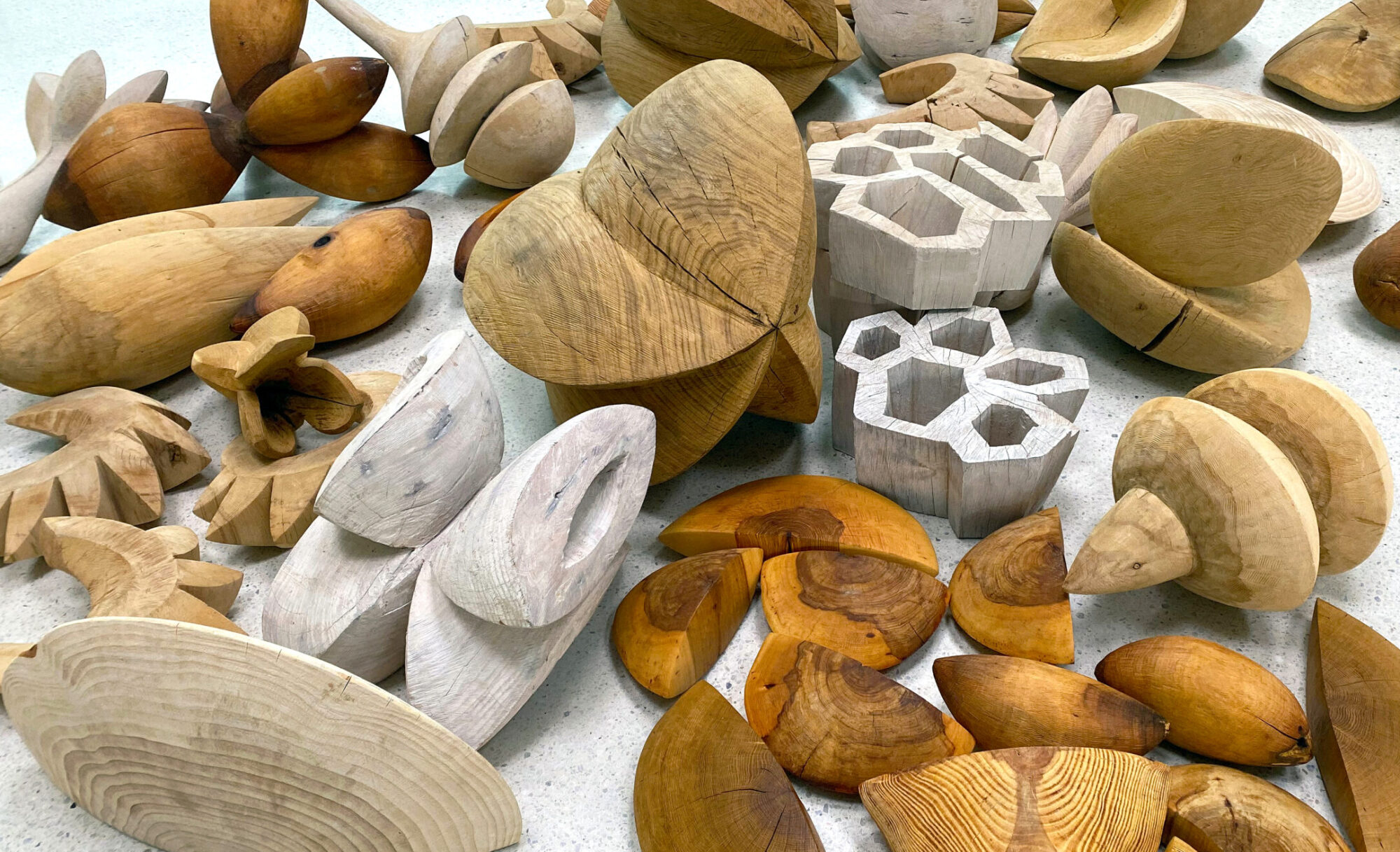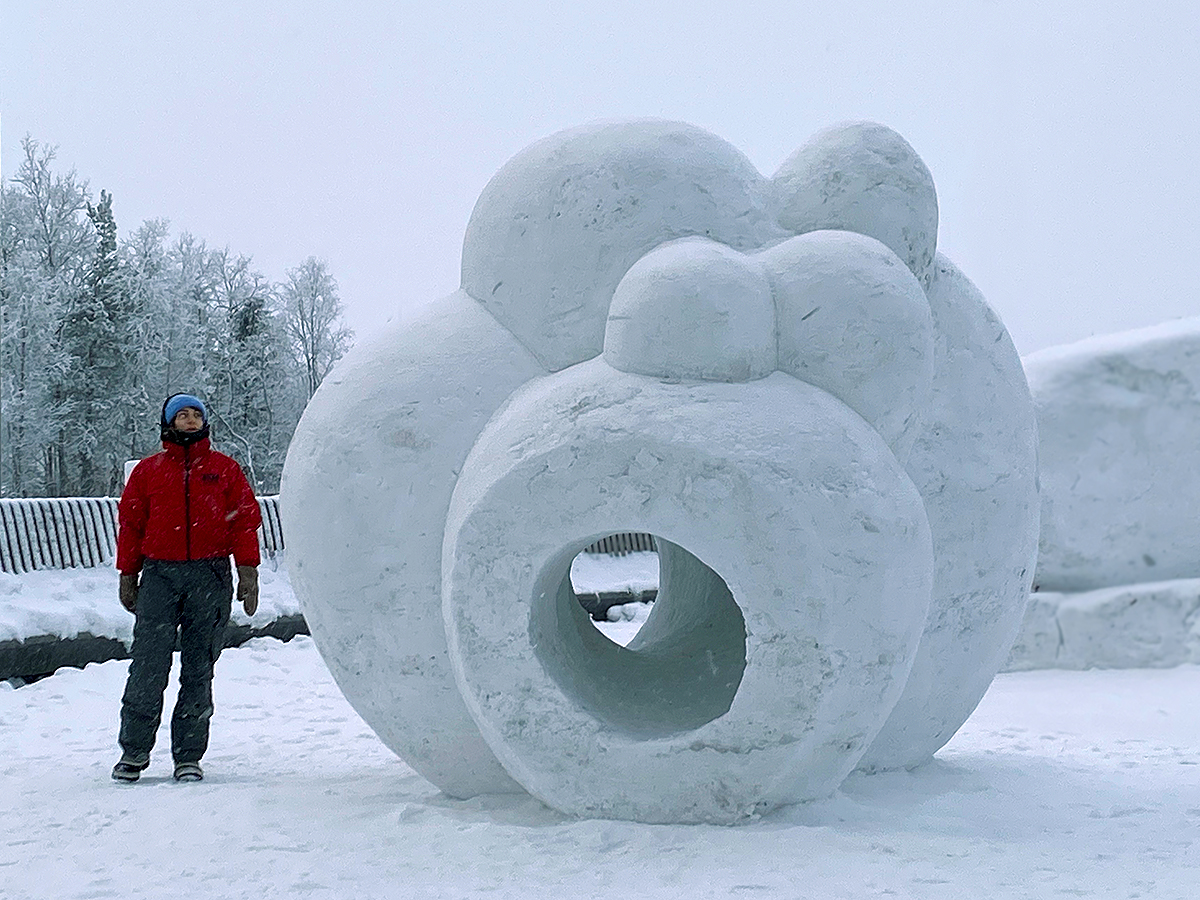
VARANDRA
2025, Kiruna, Schweden, mit Studierenden der HS Wismar, Schnee, 300 x 300 x 300 cm
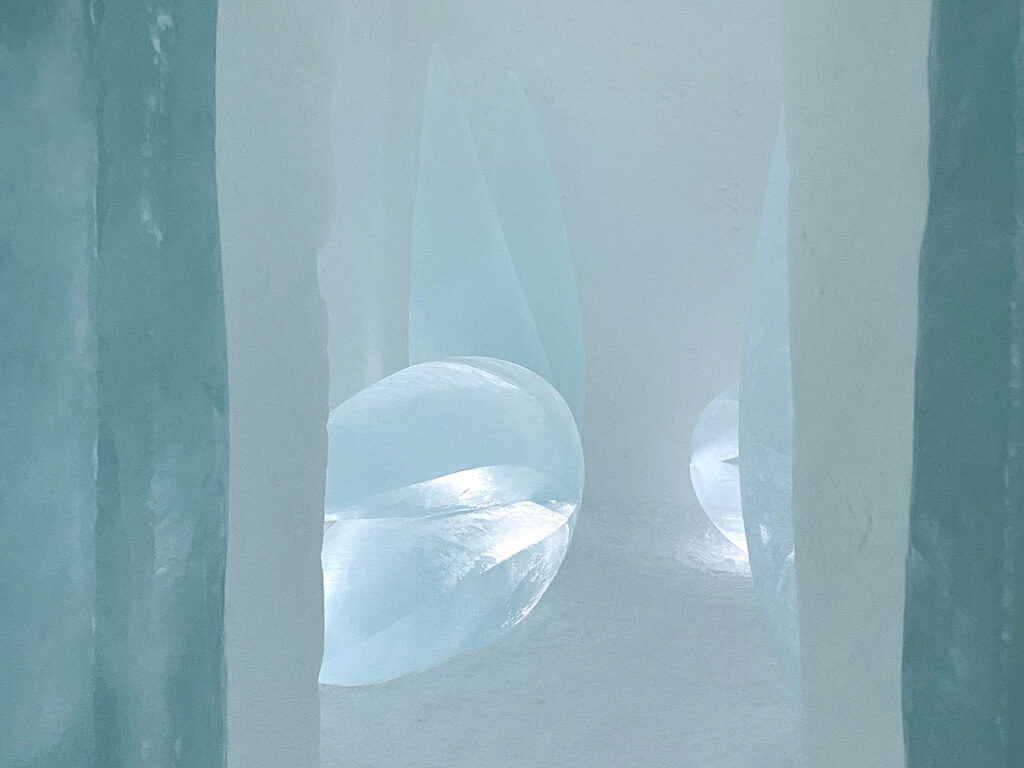
What is to come
2022, ICEHOTEL 33, Jukkasjärvi, Sweden, ice from the Torne river and snow
Back in the Upper Pleistocene, a ground squirrel buried the plant's fruit in the banks of the Kolyma River. They froze. Over millennia, the squirrel's burrow fossilized and was buried under increasing layers of ice. The plants within were kept at a nippy -7 degrees Celsius, surrounded by permanently frozen soil. They never thawed. They were not disturbed.
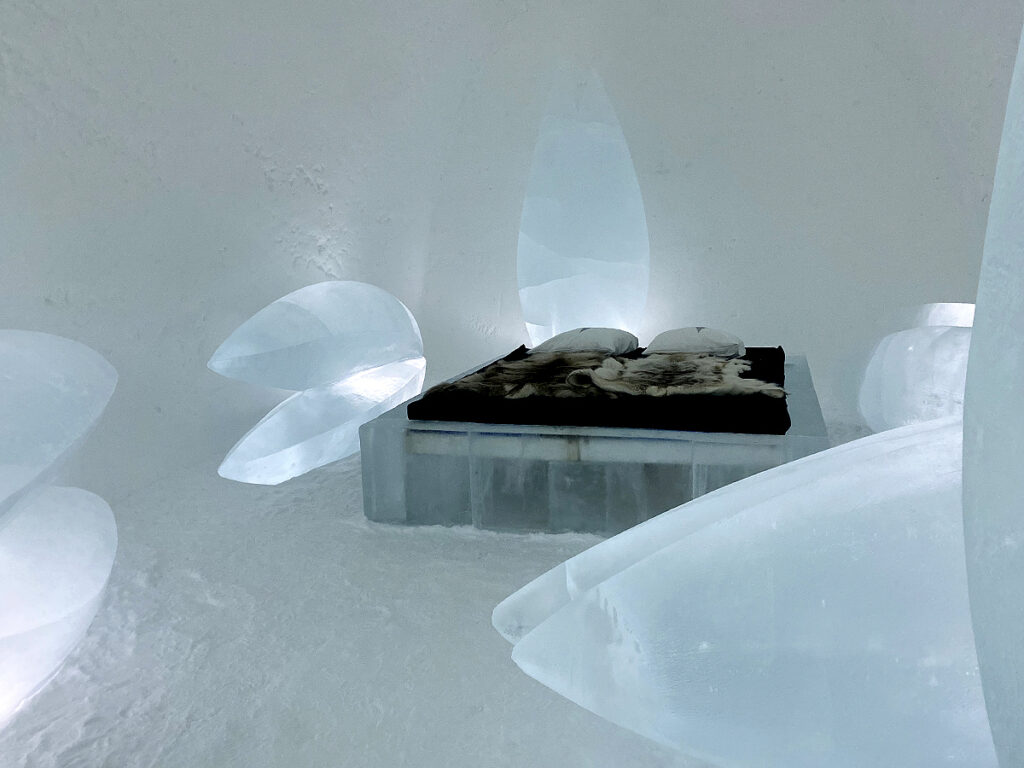
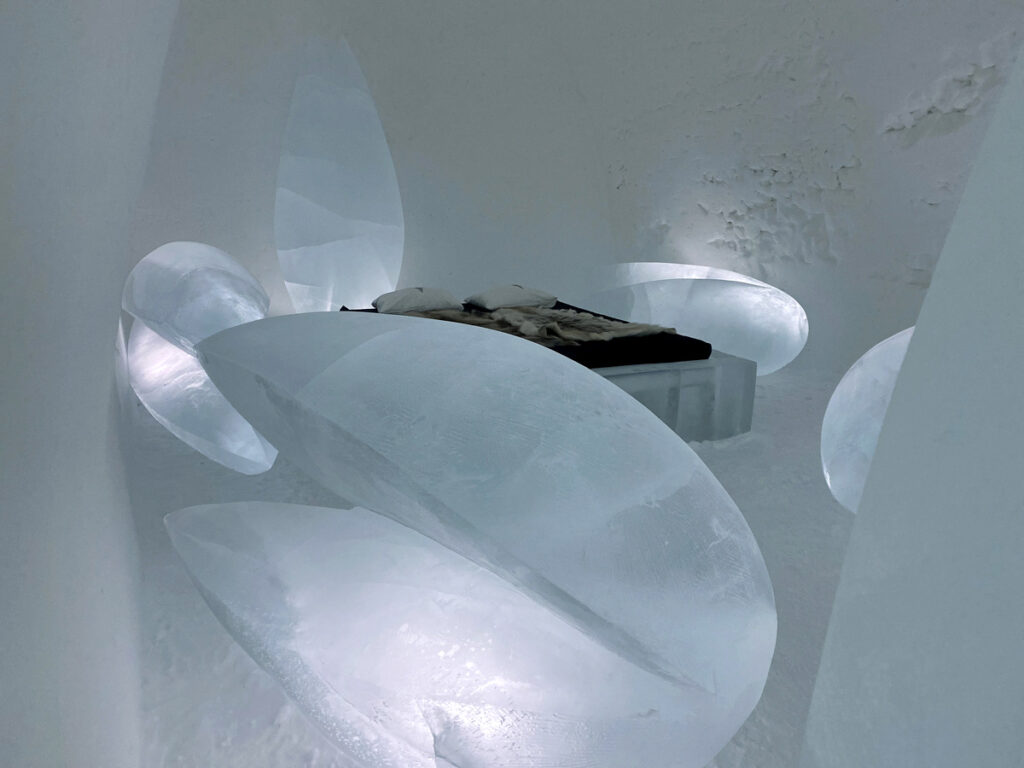
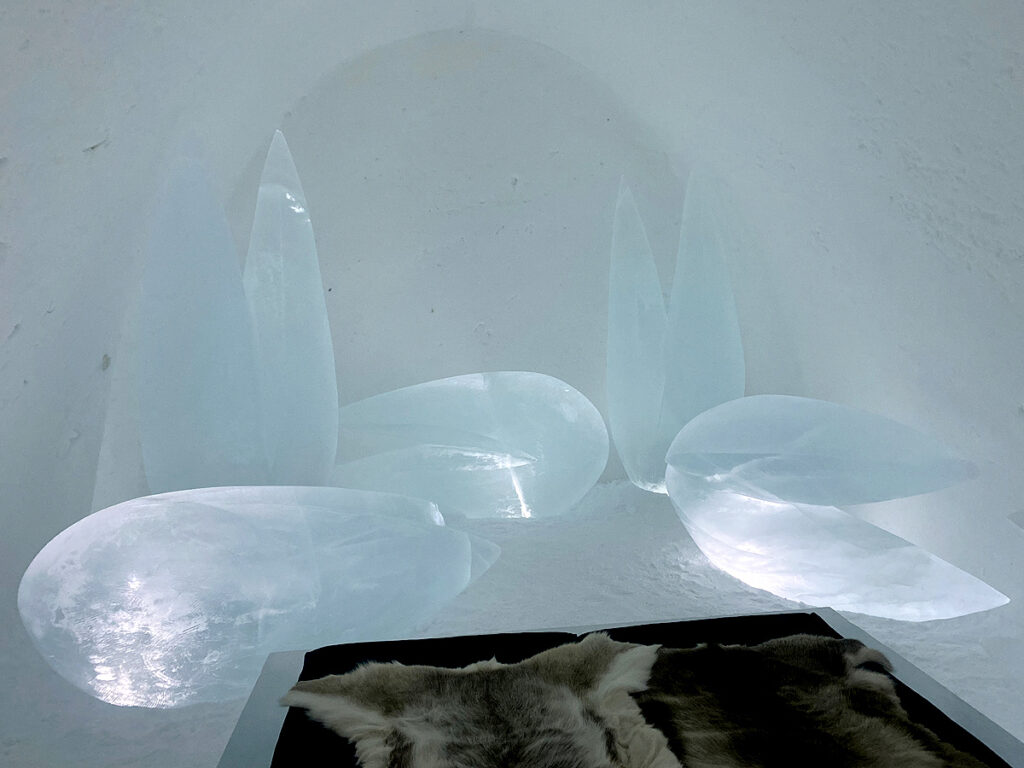
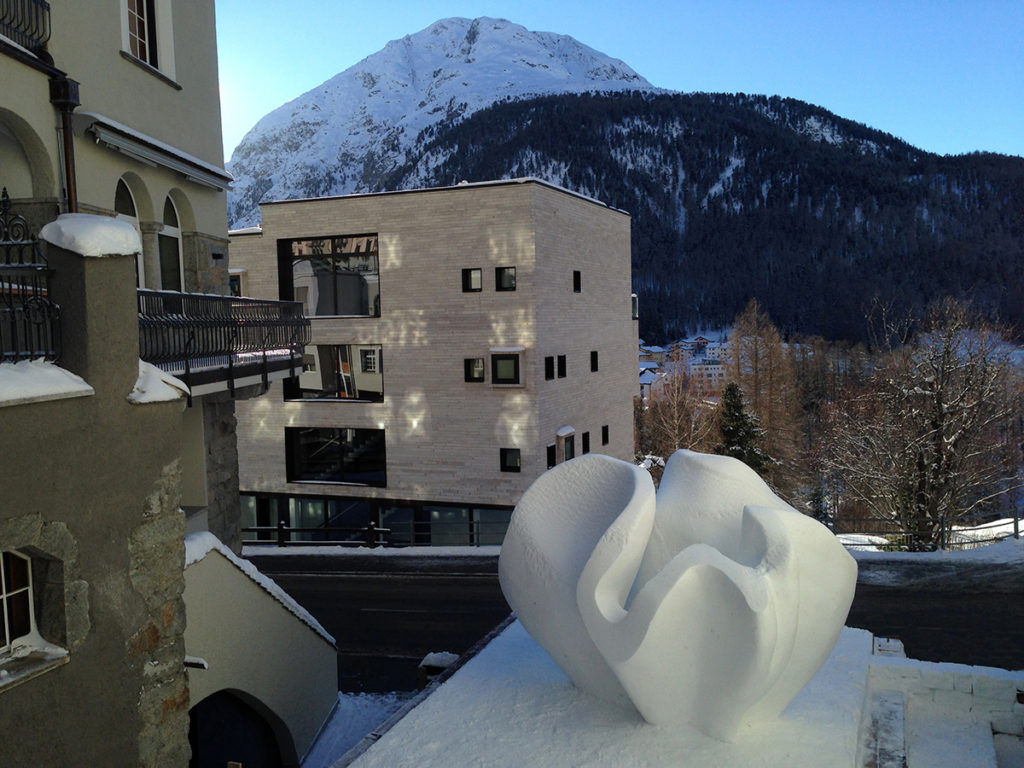
Fundibulum
2018, Urban elements, Kunstwege Pontresina, Switzerland, snow, 450 x 300 x 300 cm
Down here is the valley. Up there around us are the mountains.
Down here are urban elements. Up there is almost wild nature.
But the snow, the freshly fallen white snow, covers everything.
It makes no distinctions and connects everything.
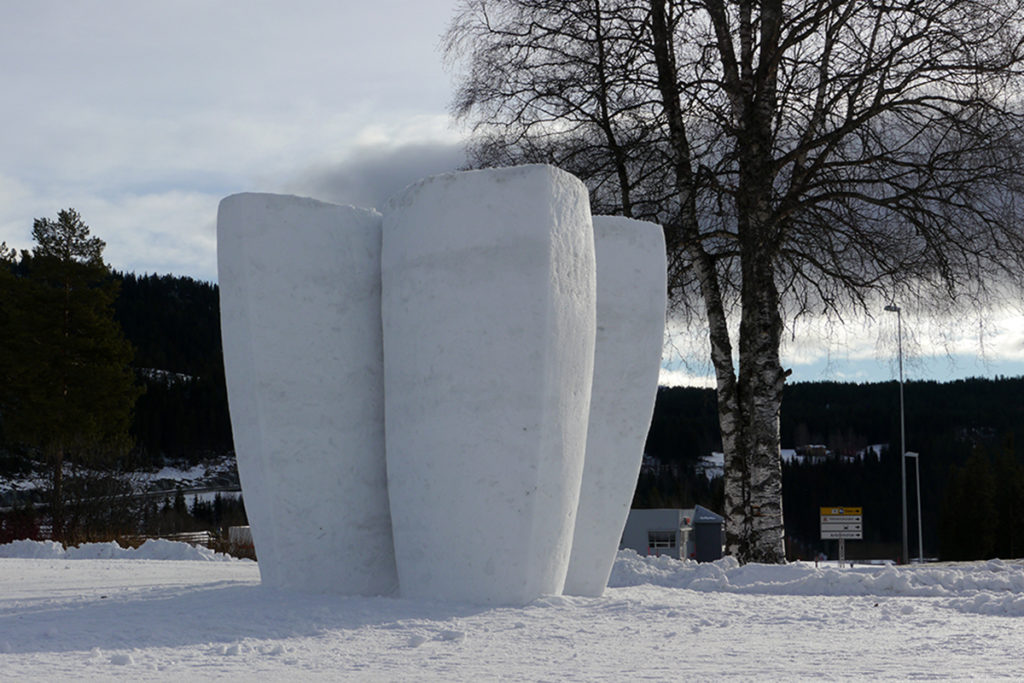
hideaway
2017, Vinje snøforming, Norway, snow, 300 x 300 x 300 cm
always be on the lookout for a place to hide
a place to hibernate in the winter is soft and quiet
there, one can reconsider old thoughts,
let moments become an eternity,
finding quietness and reconsiliation
- or allow oneself to be found
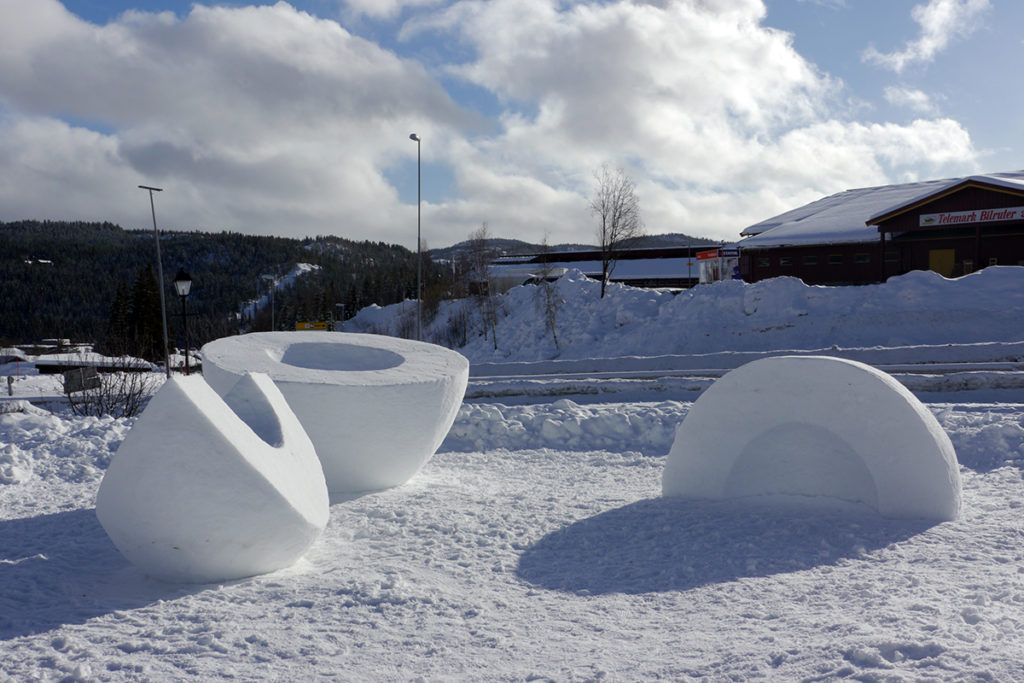
Arctic Landing – Laika
2016, Vinje snøforming, Norway, snow, 900 x 700 x 160 cm
After a delay of almost sixty years, Laika found its way back to planet earth, and landed in Vinje.
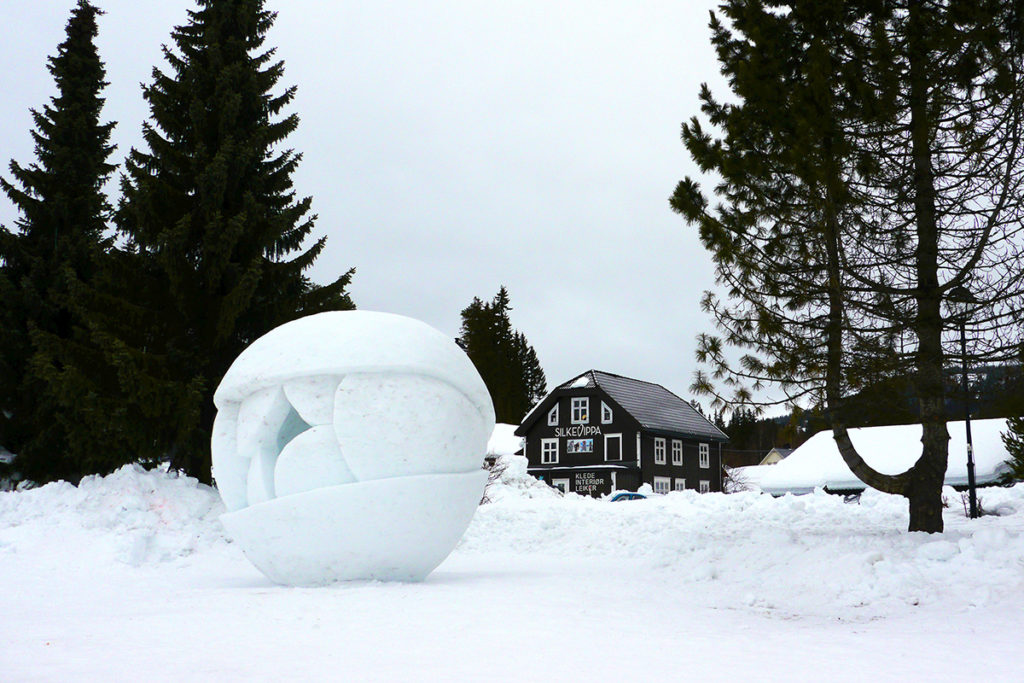
tilbake
2015, Vinje snøforming, Norway, snow, 300 x 300 x 300 cm
hibernation
hermetically dreaming
escaping cold reality
as spring whispers warm
returning
a new
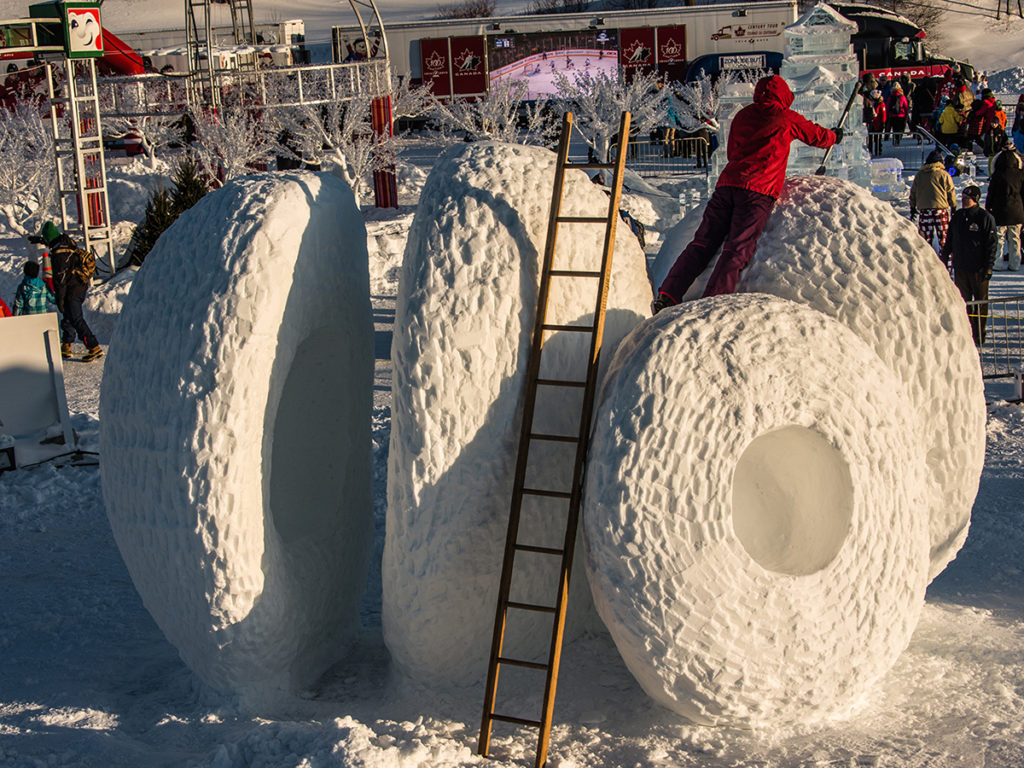
Quercus nixum Québec
2015, Québec City, Canada, snow, 540 x 360 x 300 cm
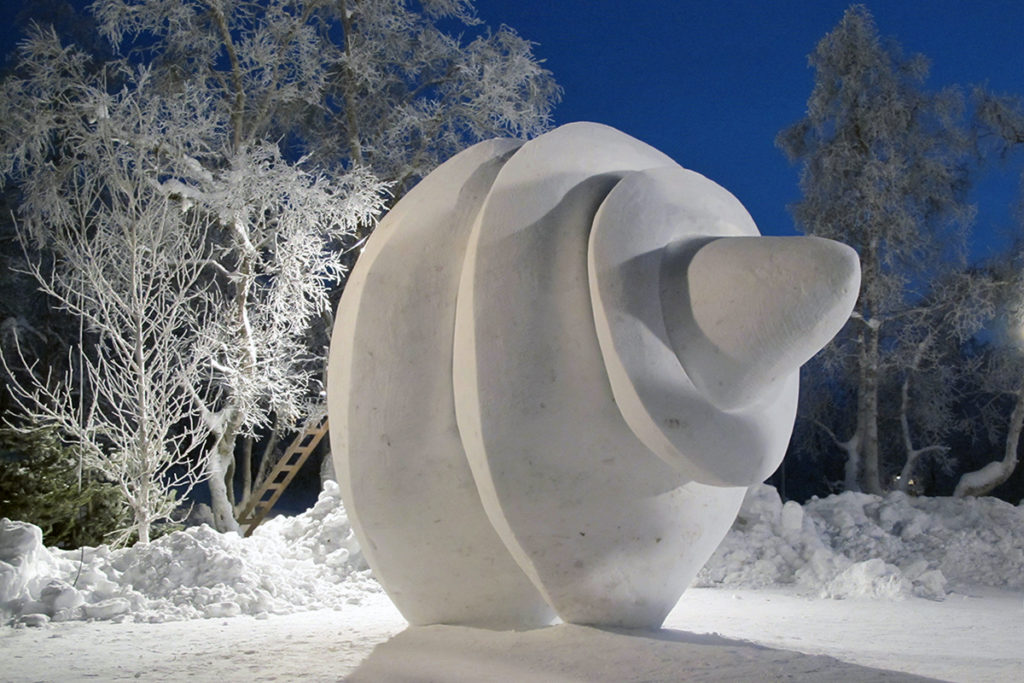
A Wondrous Encounter
2014, Kiruna, Sweden, snow, 300 x 300 x 300 cm
The iron ores of Malmgruvan has continuously unveiled riches from deep under the crust of the Earth, originating millions of years back in the history of the planet.
Recent artistic finds seem to indicate that there may even be complex, multicellular animals in there, although the evidence for that is preliminary, for now.
A previously unknown, archaic lifeform, preliminarily classi- fied as an insect egg, has been discovered and is to be excavated from the snow of Kiruna in the winter of 2014.
Insects and microorganisms have been known to survive frozen states for millions of years, then to be reanimated. What role could the new species play in our understanding of arctic fauna? And even more sensational: is there still organic life inside the egg? If so, what impact could this highly resistant prehistoric insect have on the present?
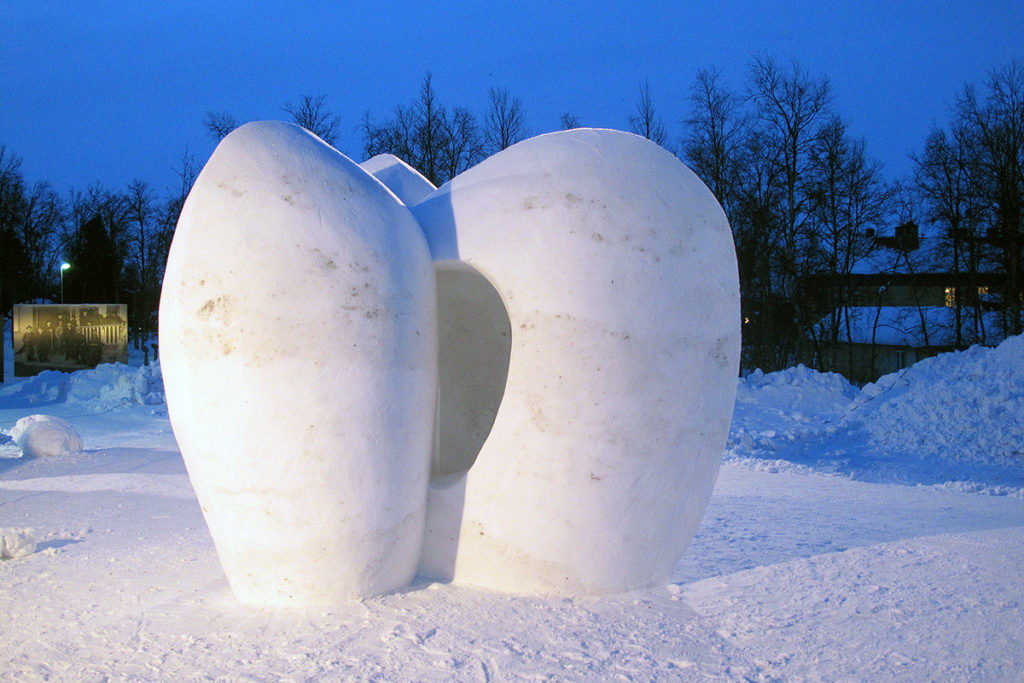
Hibernation
2013, Kiruna, Sweden, snow, 300 x 300 x 300 cm
The basic idea arises from a common recollection of childhood fantasies, and the improvisation of shelters from various natural or manmade materials.
Visitors observed and experienced the fascinating process of snow taking architectural form to offer insulation from the cold.
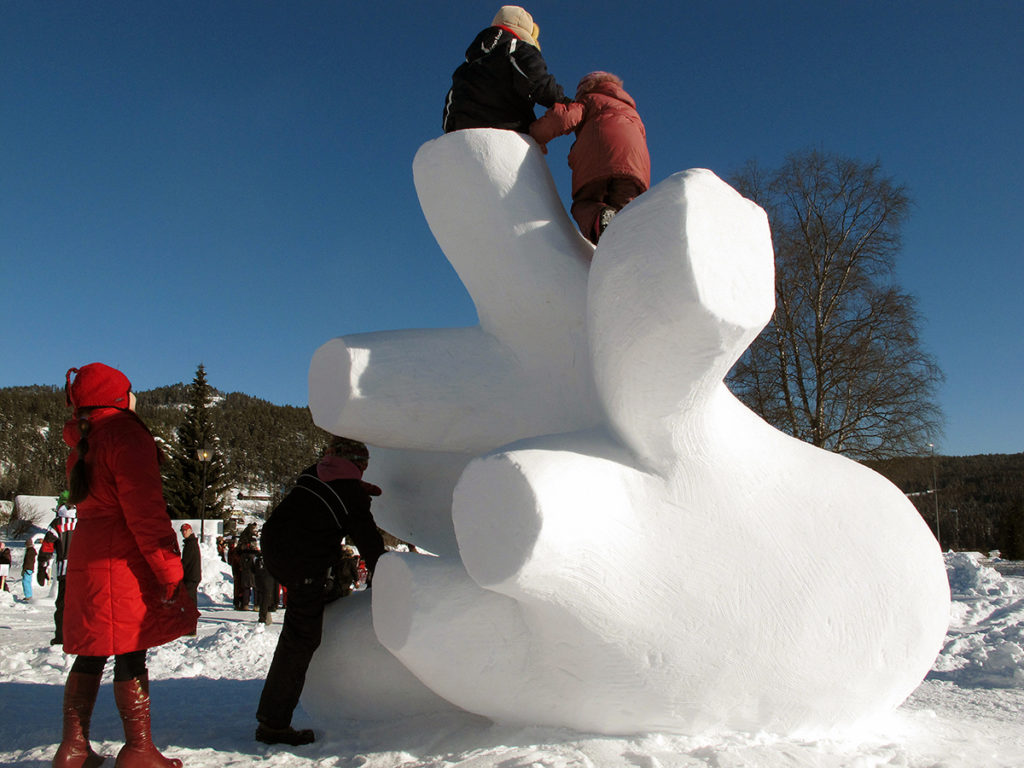
Chaoa chaos
2011, Vinje snøforming, Norway, snow, 300 x 300 x 300 cm
Today man and nature are examinated down to their smallest component. For this sake it is our belief that humans do not understand the world as less chaotic today than for three hundred years ago. It is rather the opposite. We meet the obvious, but can not always answer simple questions and describe visibility. Microchaos - I want to create an enlarged microcosm where the chaos is making sense. "Chaos chaos" - what other name could amoebas (amoibè meaning change) with their transparent imprecise shape have. The natural scientist Carl Gustav von Linne allowed himself such fun more than once in his naming.
I build a tall amoeba in snow.
Its mouth is wide open so you can enter the stomach. The material snow is in constant movement, like the amoebas. As time goes by the sculpture will be compressed more and more and the shape will change, will react to two things: the visitors and the changing climate outside the walls.
If you look at things up close with curiosity in Linne`s spirit, chaos is not so bad after all.
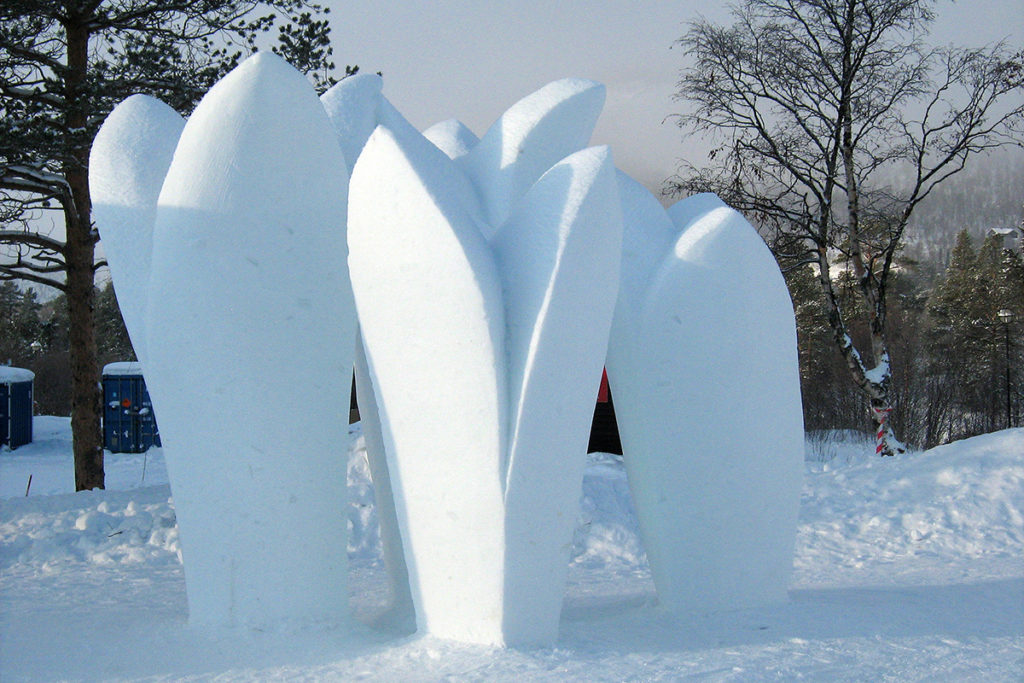
Wild growth
2010, Hovden, Norway, snow, 300 x 300 x 300 cm
